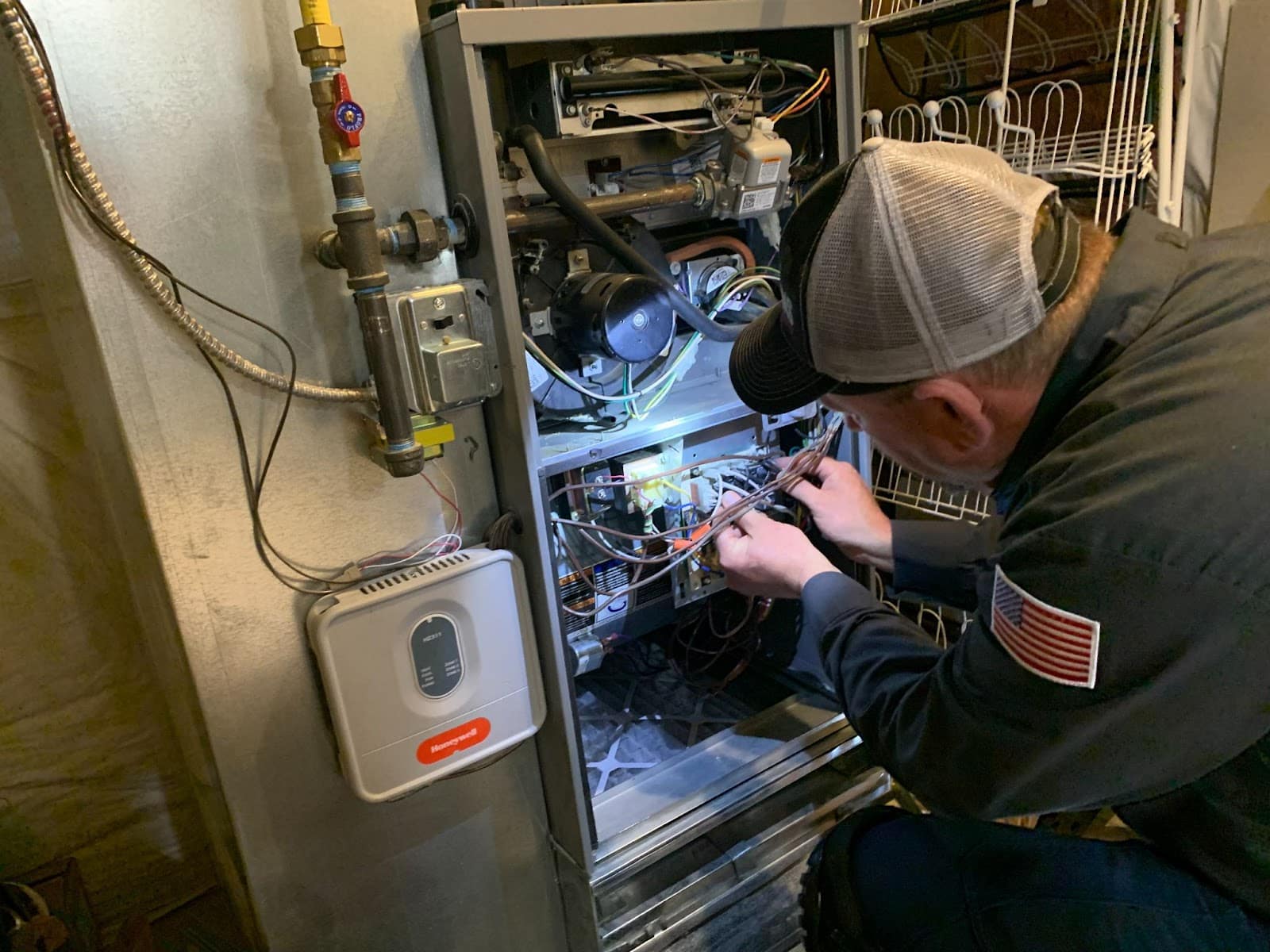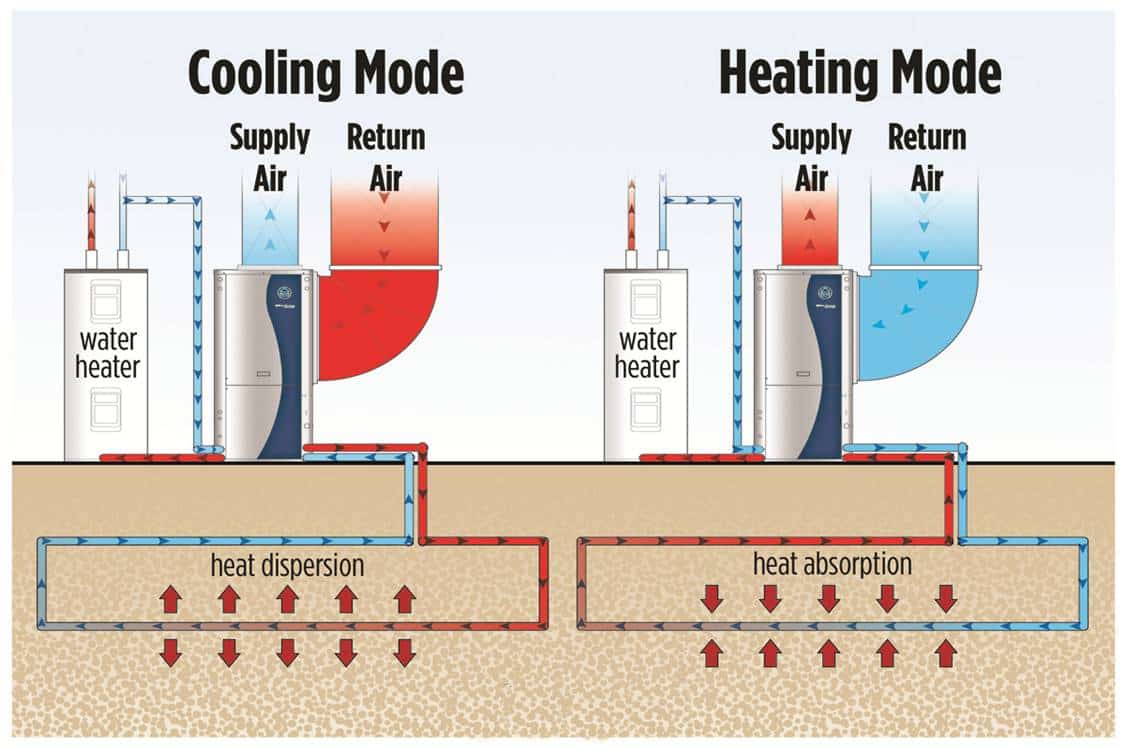
Switching out your HVAC system for improved efficiency can bring about a multitude of benefits. Not only will you experience better indoor airflow and reduced noise levels, but you can also expect enhanced indoor air quality and the convenience of a smart thermostat.
When you upgrade your HVAC system, you can improve the airflow throughout your home, ensuring that every room receives the desired temperature and comfort. This can result in a more even distribution of air and eliminate any hot or cold spots. Newer systems are designed to operate quietly, providing a more peaceful and comfortable indoor environment.
Additionally, having a new HVAC system can greatly enhance the indoor air quality of your home. Modern HVAC systems have advanced air filter options that effectively remove allergens, dust, and other pollutants from the air, providing a healthier living space for you and your family.
Integrating a smart thermostat into your system also brings a host of benefits. This technology allows for precise temperature control, customizable schedules, and remote management, ultimately leading to energy savings and reduced utility bills.
To make the most of these benefits, it is advisable to consult professionals like ours at Fort Collins Heating and Air. Our expertise and experience can guide you in selecting the right HVAC system based on your specific needs and budget, maximizing the cost savings in the long run.
Energy Consumption
When upgrading your HVAC system, you can significantly reduce your energy consumption and lower your monthly energy bills. Older HVAC systems are often less efficient and can consume more energy, resulting in higher utility costs. By investing in a newer, more energy-efficient system, you can experience substantial energy savings over time. Not only will this save you money, but it will also reduce your carbon footprint and contribute to a more sustainable environment. Modern HVAC systems are designed to operate with advanced features such as two-stage furnaces and heat pumps, which further enhance energy efficiency.
How Does an Efficient HVAC System Reduce Your Energy Bills?
An energy-efficient HVAC system can greatly reduce your energy bills allowing you to save money savings while maintaining a comfortable indoor environment.
One of the main benefits of an energy-efficient HVAC system is improved indoor airflow. These systems are designed to distribute air evenly throughout your home, ensuring that every room receives the desired amount of heating or cooling. This balanced airflow not only improves comfort but also reduces the workload on the system, resulting in lower energy consumption and decreased utility bills.
Noise reduction is another advantage when changing to an energy-efficient HVAC system. Modern systems are built with advanced technology that minimizes sound, providing a quieter operation and a more peaceful living environment. You can enjoy the benefits of perfect temperature control without the disruptive noise associated with older, less efficient units.
Energy-efficient HVAC systems are also equipped with smart thermostats. These thermostats allow you to set precise temperature schedules and make adjustments remotely, ensuring optimal energy usage. With the ability to customize your HVAC settings, you can avoid unnecessary energy consumption and reduce your monthly energy bills.
When switching to an energy-efficient HVAC system, you’ll also benefit from improved indoor air quality. These systems are equipped with advanced air filters that help remove dust, pollen, and other contaminants from the air, providing cleaner and healthier indoor air. Moreover, professional guidance is essential during the installation process, ensuring that the system is correctly sized and installed for your specific needs, maximizing its energy-saving potential.
Investing in an energy-efficient HVAC system can significantly reduce your energy bills by improving indoor airflow, minimizing noise, and utilizing a smart thermostat for precise temperature control. With enhanced indoor air quality and professional guidance, you can enjoy a comfortable and energy-efficient home.
Five Reasons to Invest in Routine Maintenance for Your HVAC System
Once you have upgraded your HVAC, it is crucial to set a maintenance checklist. Here are five reasons why investing in a routine will help prolong your HVAC.
1. Improved Indoor Comfort: Regular maintenance ensures that your HVAC system is running at its best, providing optimal heating and cooling throughout your home. By addressing any issues or inefficiencies, maintenance helps maintain a consistent and comfortable indoor environment.
2. Prevent Costly Repairs: Routine maintenance allows for the identification and resolution of minor issues before they escalate into major problems. By catching and fixing potential issues early on, you can avoid expensive repairs down the line.
3. Extended Lifespan: Proper maintenance helps extend the lifespan of your HVAC system. Regular cleaning, lubrication, and general upkeep can significantly prolong the life of your equipment and delay the need for a costly replacement.
4. Maintained Energy Efficiency: A well-maintained system operates more efficiently, using less energy to achieve the same level of comfort. Regular maintenance includes tasks such as cleaning or replacing air filters, checking ductwork for leaks, and optimizing thermostat settings, all of which contribute to improved energy efficiency.
5. Optimal Performance: Routine maintenance ensures that all components of your HVAC system are working together effectively. This includes inspecting and cleaning key parts, such as coils and fans, and checking refrigerant levels. By keeping everything in top shape, maintenance helps your system perform at its best, providing reliable and efficient heating and cooling for your home.
Smart Thermostats and Temperature Control
Upgrading your HVAC system to incorporate smart thermostats and temperature control technology can have a significant impact on both your comfort and energy savings. These innovative devices allow for precise temperature management, ensuring that your home is always at the perfect temperature, while also providing advanced energy-saving features. By optimizing the heating and cooling of your home, smart thermostats, and temperature control systems can help you reduce your energy consumption and lower your monthly utility bills. Additionally, they offer convenient features such as remote control access and programmable settings, giving you complete control over your HVAC system from anywhere, at any time. Let’s explore the benefits of having a smart thermostat and temperature control system.
1. Enhanced Energy Efficiency: Smart thermostats and temperature control systems utilize advanced algorithms to optimize your HVAC system’s energy consumption. They can learn your preferred temperature settings and automatically adjust accordingly, leveraging the latest technology to minimize energy waste. With programmable schedules and personalized settings, you can maximize energy efficiency and reduce your carbon footprint.
2. Improved Comfort and Convenience: Smart thermostats and temperature control systems offer precise temperature control, ensuring that every room in your home is at your desired temperature. Some systems even utilize occupancy sensors to detect when rooms are unoccupied, allowing them to adjust the temperature accordingly and save energy. With remote access capabilities, you can easily control your HVAC system from your smartphone, making it simple to adjust settings and maintain comfort even when you’re away from home.
3. Energy Savings and Cost Reduction: By optimizing your HVAC system’s energy consumption, smart thermostats, and temperature control systems can lead to significant energy savings and lower monthly utility bills. With the ability to easily monitor and track your energy usage, you can identify areas where you can further improve energy efficiency and make informed decisions about your energy consumption. Additionally, some utility companies offer rebates or incentives for installing energy-saving devices like smart thermostats, further reducing the upfront cost.
4. Integration with Smart Home Systems: Upgrading to smart thermostats and temperature control systems allows you to integrate your HVAC system into your overall smart home setup. You can connect these devices with voice assistants like Amazon Alexa or Google Assistant, allowing you to control your temperature settings with simple voice commands. Integration with other smart devices such as smart lighting or security systems can also provide added convenience and energy-saving opportunities.
Switching your HVAC system for an improved one offers a multitude of benefits. Not only will you enjoy better indoor airflow, reduced noise levels, and enhanced indoor air quality, but integrating a smart thermostat brings added convenience. Upgrading your HVAC system ensures optimal temperature distribution throughout your home, eliminating hot or cold spots and providing a more comfortable living environment. The improved indoor air quality, achieved through advanced air filters, promotes a healthier home for you and your family. With a smart thermostat, you gain precise temperature control, customizable schedules, and remote management, leading to energy savings and reduced utility bills. Consulting professionals like ours at Fort Collins Heating and Air can guide you in selecting the right HVAC system, maximizing cost savings in the long run. Investing in routine maintenance for your HVAC system further prolongs its lifespan and prevents costly repairs When it comes to energy efficiency, we understand the importance of having a properly functioning furnace and our team of technicians can assess the efficiency of your current system, providing recommendations to improve its performance.
By choosing Fort Collins Heating and Air for furnace installation, maintenance, and gas furnace repair needs, you are working with the best. Consult our professionals for expert guidance and support today!
















